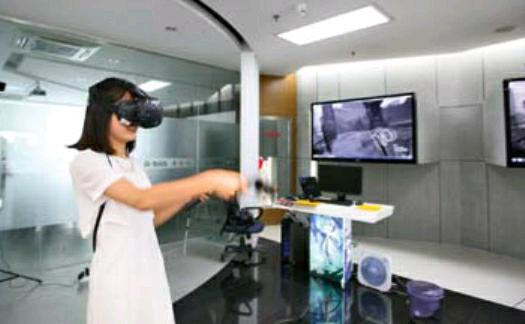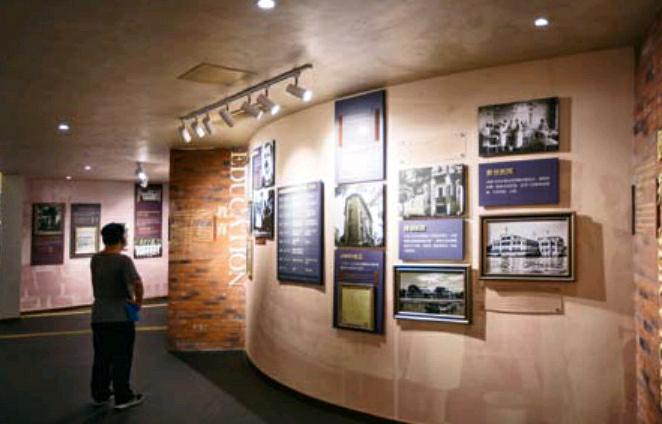Multi-Faceted Xiamen
2017-09-27byZhangXue
by+Zhang+Xue
On the sea and inseparable from it, the city of Xiamen, Fujian Province, is located on the southeastern tip of China, facing Taiwan Island across the Taiwan Straits and the South China Sea to the south. The citys iconic culture is flavored not only by the vast ocean surrounding the city, but also by unparalleled openness and inclusiveness.
Vanguard of Reform
Xiamen features a 234-kilometer-long coastline dotted with deep-water, ice-free ports, making the city an important hub for foreign trade along Chinas southeastern coast.
As early as the Song Dynasty (960-1279), Xiamen Harbors position as an outer auxiliary port for Quanzhou made it an important location on the Maritime Silk Road. Today, the citys container handling capacity ranks 15th in the world, making Xiamen one of Chinas four major international shipping centers.
From a fishing port to a modern metropolis, from one of the first four special economic zones to one of the earliest free trade areas (FTAs), Xiamen has remained a forerunner since Chinas reform and opening up, serving as a window to the outside world.
Located in Haicang Port Zone of Xiamens free trade area, Xiamen Ocean Automatic Wharf is one of the first of its kind globally. Rather than countless workers moving past each other, giant cranes and automated ferries smoothly sway back and forth, loading and unloading containers in a precise and orderly manner.
Xiamen wharf is the first automatic terminal, of which China holds its independent intellectual property rights. Since it began operation, the wharf has not had a single accident.
Less than two kilometers away is the start of the Xiamen rail line to central Europe, which connects to other maritime and land transport routes. Trains run far north through Manzhouli, Inner Mongolia Autonomous Region and across the Eurasian continent to Moscow, Russia to deliver products such as loaders, precision instruments, minerals, and shoes.
By linking the sea to the land, Xiamen is a hub of the Maritime Silk Road that has created new logistics channels to serve countries along the terrestrial route, keeping the ancient Silk Road and the Maritime Silk Road close together.
On March 1, 2015, the Xiamen Area of China (Fujian) Pilot Free Trade Zone officially opened, marking the dawn of a new developmental mission for the city and its residents. Vice Mayor Huang Qiang declared that the pilot free trade zone had set a new bar for reform and innovation in Xiamen and served as an important engine to promote industrial transformation and upgrade.endprint
New Industries Accelerate Growth
The second-phase Xiamen Software Park sits at the eastern end of Xiamen Island. Built like a garden featuring booming flowers and lush lawns, avant-garde office buildings are laid out similarly to Silicon Valley in the United States.
A handful of big-name tech players such as Meitu were born in the software park. A local startup founded in 2008, Meitu has attracted more than 500 million users globally, and its products are used around the world in over a billion mobile devices.
With the rise of smartphones and the mobile internet, photography and image sharing have become central activities in daily life, making convenient picture processing software in high demand. Meitu founder Wu Xinhong seized the opportunity and launched the PC version of the software in October 2008.
Today, Meitu and Gigabit—together known as the Xiamen Internet Legion—are major players in the global internet market. In 2016, Xiamen Software Park achieved operational revenue of over 70 billion yuan, an increase of more than 20 percent year-on-year, and hosted 2,671 registered industrial and commercial enterprises that employed 92,000 people.
Eight companies now residing in the software park have been publicly traded, and 42 enterprises have been listed on the “new third board.” The third phase of the software park, located in Jimei New Town, is being utilized to adapt to the rapid development of software and information technology.
The conglomeration of high-tech industries has played an important role in the innovative development and urban economic transformation of Xiamen.
“The phoenix will only be attracted when sycamore trees are planted,” remarked Vice Mayor Huang Qiang, citing an old Chinese proverb in an interview. “The thriving high-tech enterprises will surely attract more talent, which in turn will optimize the talent structure of Xiamens industry.”
Coffee and Tea: A Slow Rhythm of Life
Xiamen takes pride in its mild and rainy subtropical monsoon climate. Flowers blossom year-round, making the city a “garden on the sea” that has been honored as one of Chinas Top 10 Livable Cities, with the UN Habitat Award, and as an International Garden City, just to name a few. Many honors can be attributed to Xiamens impressive urban construction and public happiness index.endprint
The citys reputation has attracted tourists from all corners of the country as well as the world, who come to experience the slow, beautiful rhythm of life.
Early each morning, people flock to the shore of the island to enjoy the cool sea breeze, bathe in the morning sunlight, jog while watching the sunrise, and embrace the new day.
After lunch, visitors often ride bicycles down Yunding (Top of the Cloud) Road, admire the city view from atop a hill or hide away in a café to enjoy a tranquil afternoon, sipping coffee while reading a book.
As night falls, they choose a small time-honored restaurant along Zhongshan Pedestrian Street to try local snacks such as a bowl of noodles with satay sauce or peanut soup. Bars along North Hubin Road boast the sounds of youth via heavy metal music.
Xiamen residents love drinking tea, but strangely, it is difficult to find a teahouse because the beverage is so integrated into daily life. A standard appliance for local residents is a well-equipped tea set featuring a tray, a bowl and several little tea cups. Such sets can be found in every corner of the city, from small shops to modern office buildings and from old red-brick buildings to new condominiums.
“Sit and have a cup of tea” is a standard local greeting of the hospitable residents, who always find time to lead outsiders into the simple life of Xiamen and its tea culture. The most popular brand is Tieguanyin Oolong Tea from Anxi, Quanzhou, which is made using a tureen and intended for small cups.
People in Xiamen love coffee too. Visitors will often see someone sitting by a French window with a cup of coffee and perhaps a couple of friends. Chatting around drinks is one of the most common activities in Xiamen.
Statistics show that the count of cafés in Xiamen now exceeds 2,000, giving it the densest concentration in the country. Most are found along North Hubin Road.
“Open,” “innovative” and “livable” are the adjectives most frequently employed to describe modern Xiamen. Today, Xiamen has shouldered a new mission: In September this year, it hosted the BRICS leaders meeting, which would undoubtedly enhance its international visibility and accelerate its integration into global development. A new Xiamen is thriving.endprint